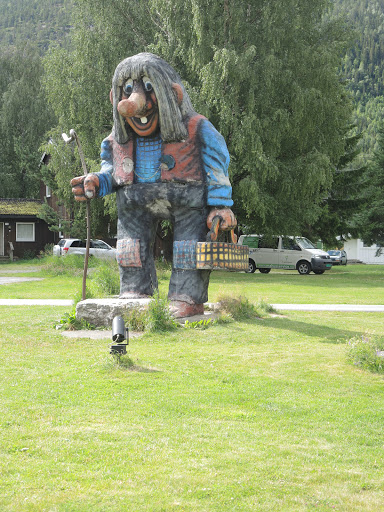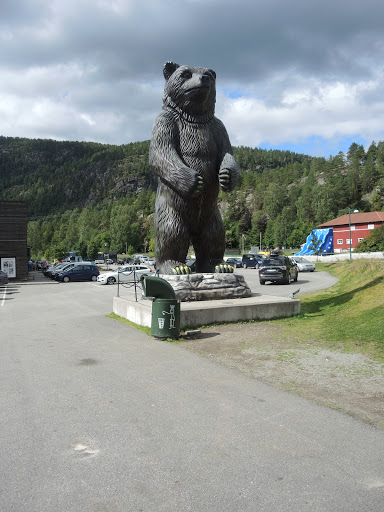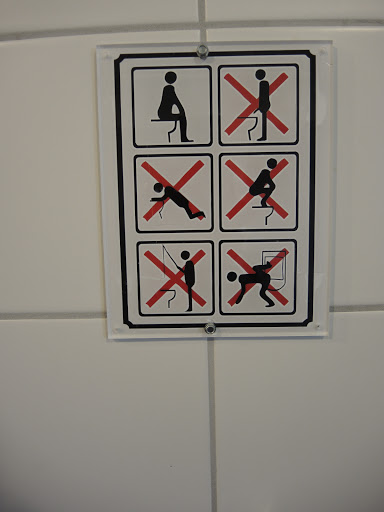The first stop of the morning came, appropriately enough, at the Viking ship museum in Oslo. The Vikings played an important part in the history of the British Isles and hence in America’s history as well so let’s start with a brief examination of the word itself.
In English we say VIE-king. The Norwegians say VIHK-ing rhyming with sick-ing. This might seem like a distinction without a meaningful difference but look at a map of southwestern Norway and you’ll see any number of places ending in ‘vik’ including our landing spot tonight, Ulvik. This suffix survives in common in English place names as well. Think of Warwick. Or Keswick. Or Ardwick. And so on. It has also morphed into the form ‘wich’ if you think of places like Ipswich or even Greenwich and you begin to see just one way these adventurous people influenced the English language
In the Scandinavian languages ‘vik’ refers to the head of a bay or fjord. Thus, the Vik-ings were people from the land at the top of a fjord. As an individual, a viking was a man who left his homeland for adventure and profit abroad. In early Norse writing, the word existed in both a noun form (víkingr) who was the person traveling for adventure and a verb form (víking) which meant to travel or participate in one of these adventures.
In the Viking Ship Museum, the principal displays consist of three burial ships and one burial chamber. The oldest of these in terms of its discovery is the Tune Ship that was unearthed on a farm in Tune in 1867. Dating to about the year 900, this is the most fragmented of the ships displayed. The discovery included the remains of a man’s body, weapons, a suit of chain mail, pieces of a ski, and the skeleton of a horse.
The oldest ship in terms of chronology is the Oseberg Ship which has been dated to about 820.
The ship is 22 meters long and five meters wide. When fully manned, it had a crew of 30 oarsman, a helmsman, and a lookout. This ship was used as a burial ship for two apparently powerful women evidenced by the inclusion of three elaborate sledges, a wagon, five carved animal head posts, five beds, six dogs, two cows, and 15 horses.
While all the other items included in sending the deceased to wherever the Vikings believed their dead resided clearly played an important role in providing for the afterlife, by the ninth and tenth centuries, the ship was clearly centrally important. Thus, these ships likely made a grand show of wealth and status.
Leaving Oslo, we would drive across Hardangervidda or Hardanger (quick pronunciation guide is hard-anger) Plateau ending our day in Ulvik some 350 kilometers to the east. The plateau is the largest of its kind in Europe and the largest national park on mainland Scandinavia preserving a traditional seasonal migration route for wild reindeer. It’s the southernmost limit for arctic plants and animals, including the arctic fox and the snowy owl.
Although the plateau covers parts of three counties, sadly for me, the route took us north of Rjukan in the Telemark. Rjukan was the site of the Vermork Norse Hydro plant that housed Nazi Germany’s heavy water experiments. The eventual sabotage of the plant by 12 soldiers on skis was dramatized in the 1965 film The Heroes of Telemark and has been recounted in several books including a first-hand account by Knut Haukelid called Skis Against the Atom that I read several years ago. It was among the most daring and most critical acts of sabotage in World War II.
The truth for me was that the landscape of the plateau appeared relatively barren though there are some beautiful lakes. Of course, the fact that we were traveling across it in a speeding bus might have colored my impression. Taking photos from a moving bus is hard but, for me, the scenery did little to inspire the effort.
One time I felt compelled to take some photos fortunately came when we made a brief stop in Flå (flo-uh) for a bathroom / snack break. Just before you reach the McDonald’s in Flå (yes, there is a McDonald’s in this town of 945) stands this chap:
One can find depictions of smiling trolls all over Norway. However, since trolls are frequently described as being 12 times the size of a man, very strong, but slow and dim-witted, and are at times also described as man-eaters, and as turning to stone upon contact with sunlight, smiling might not be the most appropriate expression. When you see boulders scattered through a valley, someone drawing on the legend might tell you they are the remains of a troll who spent too much time in the sun. Frequently, we’d spot hay bales wrapped in sheets of white plastic that our guide, Frederick, would occasionally refer to as troll eggs.
A hundred meters or so up the road from the troll, stood this bear. (I was tempted to take the picture from behind because if you think of it as an anthropomorphic male, you should be able to imagine what it looks like he’s doing.)
Norway is home to a few brown bears. They’re generally small in size and the population has dwindled to fewer than 150 in the most recent census. Whether this bear is longing for a lost past or looking toward a hopeful future, I will leave for you to determine.
Flå also provided my first – and, I thought, possibly only – chance to take a photo of a poorly translated or undecipherable sign – something long-time readers know I enjoy. Given that most Scandinavians speak English quite well, finding poorly translated signs seems almost out of the question. Spotting a puzzling sign, though rare, did happen – at least on this occasion.
What, exactly, are the figures at the bottom not supposed to do? Fish in the commode and urinate like a dog? If you have an answer, please share it.
The highlight of the drive was the stop at Vøringfossen or Vøring Falls. It’s one of the principal photo stops on the drive across the Hardangervidda and, while nice to look at, didn’t strike me as being in any real way awesome. Of course, when you’ve visited Victoria Falls at the height of its flow, most waterfalls merely drip by comparison. It’s interesting that the Norwegian government thinks enough of the site that the flow to the falls is protected and cannot be dammed for hydroelectric power. On the other hand, with a total drop of 182 meters and a major drop of 136 meters it barely makes the top 100 in Norway in total fall.
The ride also took us along the Eidfjord which is an arm of the larger Hardangerfjord. Since I’ll be writing a lot about fjords, you might find it helpful to know exactly what a fjord is and how it comes to be.
Simply put, a fjord is deep, narrow and long sea arm filled with saltwater. It’s usually surrounded on three sides by steep land and empties into the sea at its mouth which is usually the shallowest point of the fjord. This occurs because the glaciers that once filled the valley either began to float or had room to spread out whereas farther inland they were more confined and carved the earth more deeply. Fjords are U-shaped undersea valleys that must be longer than they are wide. Otherwise, they would be a bay or a cove.
Fjords are formed when glaciers cut a U-shaped valley where the bottom is below sea level. When the glacier retreats (a process called glacial rebound) water from the sea rushes in to fill the void. Fjords generally have a sill or shoal (bedrock) at their mouth caused by the previous glacier’s reduced erosion rate and terminal moraine. Fjords are also often systems. Just as a river can have many tributaries, a fjord can have many arms.
The main Hardangerfjord is the second longest in Norway and the third longest in the world. Ulvik sits at the head of Ulvikafjord which is part of the Hardangerfjord system. Everyone in our group was frustrated by the poor WiFi service in our hotel but at least we were frustrated in a beautiful spot.




How does Tracey Arm Fjord in Alaska compare? Do you recall what it was like?
The Viking ship is truly astounding.
My recollection isn’t that vivid. Sailing the Norwegian fjords in general had the feeling of the Alaska fjords. I remember the Alaska fjords as being icier, steeper and having less greenery. There was no sailing to glaciers on these fjords but we were relatively far south.
Which makes geological sense, Todd, because I am sure the Norway Fjords are older than the Alaskan ones. A college friend of mine recently toured Scandinavia and went far north of the Artic Circle. He reported that little ice was available to be seen.